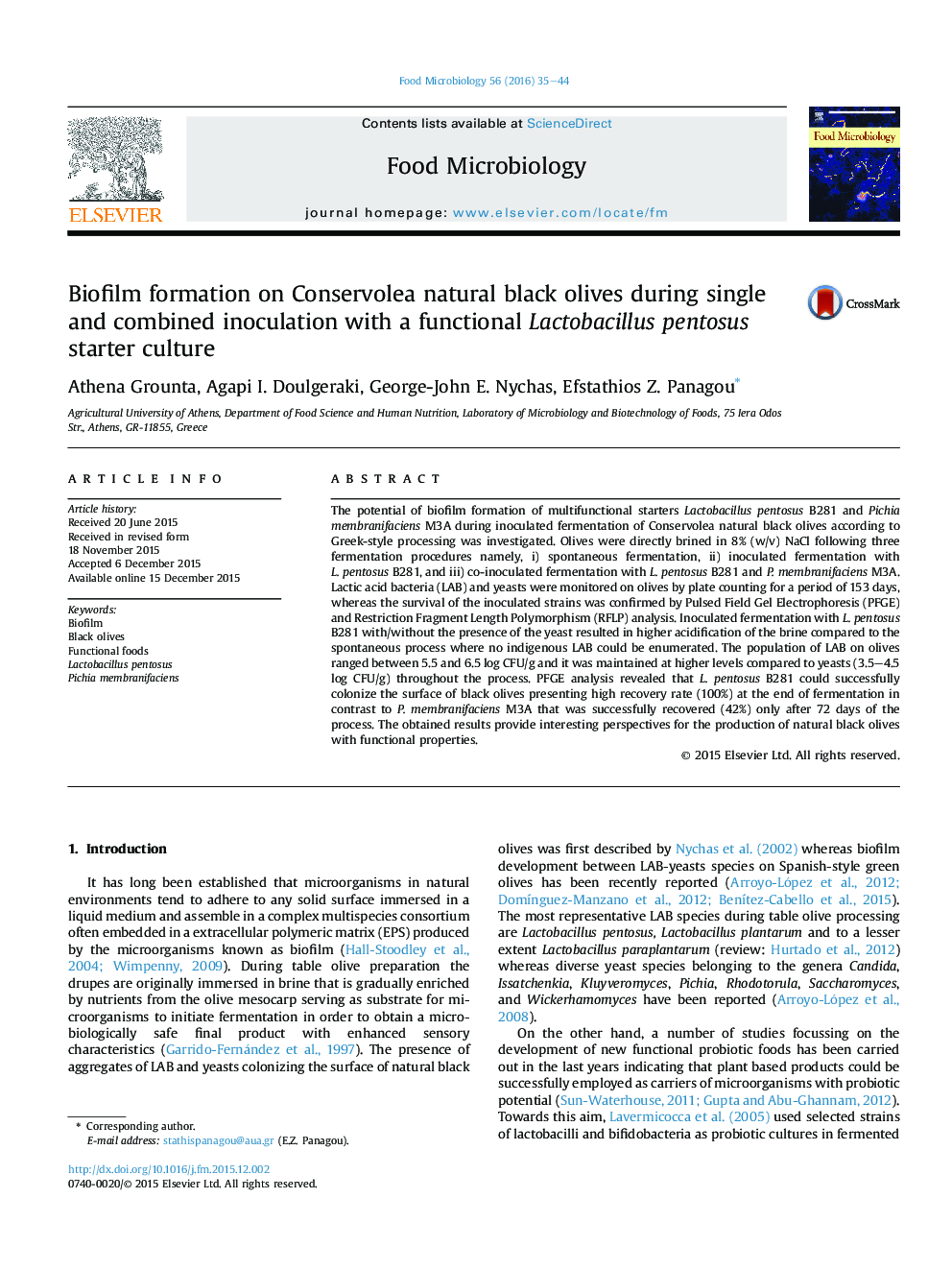| کد مقاله | کد نشریه | سال انتشار | مقاله انگلیسی | نسخه تمام متن |
|---|---|---|---|---|
| 4362651 | 1616245 | 2016 | 10 صفحه PDF | دانلود رایگان |

• Lactobacillus pentosus and Pichia membranifaciens were used as starters in black olive fermentation.
• Their in situ imposition on olives was studied in order to form biofilms.
• L. pentosus could dominate the process and recovered 100% at the end of fermentation.
• P. membranifaciens was recovered in the middle but not in the end of the process.
• L. pentosus could be used as a multifunctional starter in black olive fermentation.
The potential of biofilm formation of multifunctional starters Lactobacillus pentosus B281 and Pichia membranifaciens M3A during inoculated fermentation of Conservolea natural black olives according to Greek-style processing was investigated. Olives were directly brined in 8% (w/v) NaCl following three fermentation procedures namely, i) spontaneous fermentation, ii) inoculated fermentation with L. pentosus B281, and iii) co-inoculated fermentation with L. pentosus B281 and P. membranifaciens M3A. Lactic acid bacteria (LAB) and yeasts were monitored on olives by plate counting for a period of 153 days, whereas the survival of the inoculated strains was confirmed by Pulsed Field Gel Electrophoresis (PFGE) and Restriction Fragment Length Polymorphism (RFLP) analysis. Inoculated fermentation with L. pentosus B281 with/without the presence of the yeast resulted in higher acidification of the brine compared to the spontaneous process where no indigenous LAB could be enumerated. The population of LAB on olives ranged between 5.5 and 6.5 log CFU/g and it was maintained at higher levels compared to yeasts (3.5–4.5 log CFU/g) throughout the process. PFGE analysis revealed that L. pentosus B281 could successfully colonize the surface of black olives presenting high recovery rate (100%) at the end of fermentation in contrast to P. membranifaciens M3A that was successfully recovered (42%) only after 72 days of the process. The obtained results provide interesting perspectives for the production of natural black olives with functional properties.
Journal: Food Microbiology - Volume 56, June 2016, Pages 35–44